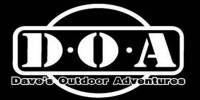|
|
|
|
|
|
|||||||||||||||||||||||||||||||||||||||||||
|
1. Airfoil Any part of an aircraft that is designed to produce lift. 2. Angle of Attack (AOA) The angle that describes the difference between the airfoils chord and the direction of its encounter with the relative wind. 3. Angle of Incidence (AOI) The angle that describes the difference between the longitudinal axis of the aircraft and the chord line. 4. Camber The curve of the upper and lower surfaces of an airfoil. The camber determines the amount of lift a wing produces as air flows around it. 5. Chord An imaginary straight line drawn through the airfoil from its leading edge to its trailing edge. 6. Critical Angle of Attack Angle of the airfoil at which air becomes turbulent as it flows over the airfoil and stops creating lift. 7. Drag The force that delays or slows the forward motion of an aircraft. 8. Leading Edge The portion of an airfoil that meets the air first. 9. Lift The force that opposes gravity or weight. 10. Relative Wind The airflow produced by the aircraft moving through the air. It is in a direction 90 degrees to the lift vector of the airfoil. 11. Stall A condition caused when the critical angle of attack is exceeded. The air flowing over the airfoil becomes turbulent and no longer produces lift. 12. Thrust The force that gives an aircraft its forward motion. 13. Trailing edge The portion of an airfoil at which the airflow over the upper surface joins the airflow from the lower surface. 14. Weight Gravity pulls all objects within its sphere of influence towards the Earth. This pull is known as weight. The greater the mass of the object, the greater the weight.
|
